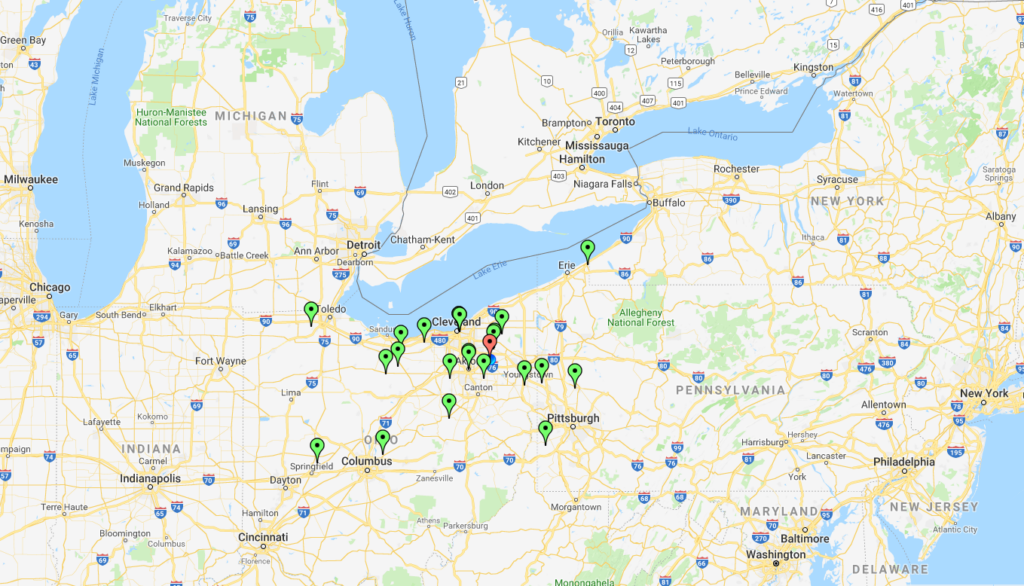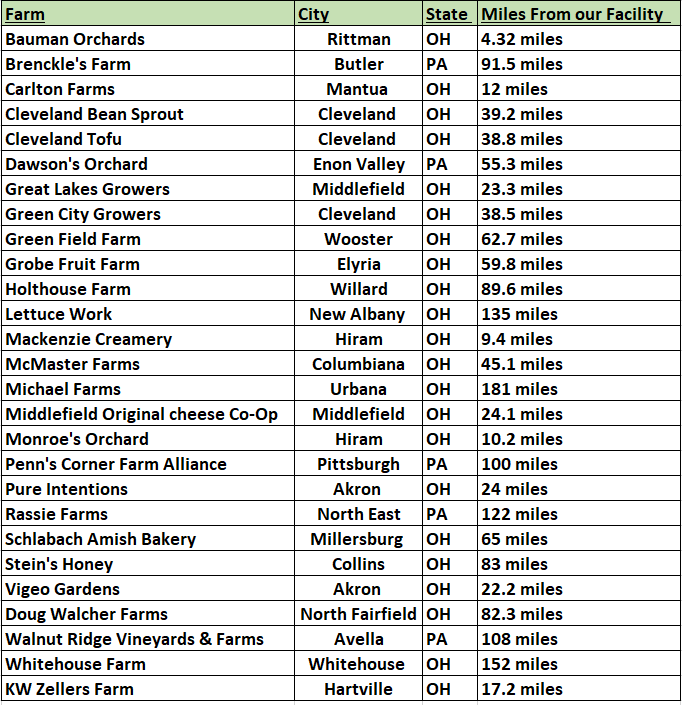
What is local produce?
Local produce is defined as produce that comes from 150-300 miles away of its point of sale or consumption.
Great Lakes Growers New Greenhouse
Why buy local?
Fresher food tastes better: When food is picked and eaten at the peak of freshness, it not only retains more nutrients, it also tastes better and is full of flavor.
Supporting your local economy: By choosing food produced locally, you’re supporting your community, and you help keep local producers in business.
Local food benefits the environment: By purchasing locally grown foods you help maintain farmland and green and/or open space in your community.
Less waste: Because of the shorter distribution chains for local food, less food is wasted in distribution, warehousing and merchandising.
Local is healthier…
Discover why it’s important to buy local food, and the health benefits of eating locally grown produce. Fruits and vegetables begin to lose their nutrients within 24 hours of being picked, so fresher produce is more nutritious. Locally grown food is picked at its peak ripeness, when it’s most dense with nutrients.

Eat Seasonally…
When you eat fruits and vegetables that are in season you get all the health benefits and they are full of flavor. Research has found when an item is imported out of season you are only getting half the vitamins and nutrients. When grown locally, the crops are picked at their peak of ripeness versus being harvested early in order to be shipped and distributed.
Safer…
When produce is imported and out of season, fruits like tomatoes, bananas, and pears are often picked unripe. They are then artificially “ripened” with ethylene gas. The more steps there are between you and your food’s source the more chances there are for contamination. Food grown in distant locations has the potential for food safety issues at harvesting, washing, shipping and distribution.
Little to no pesticides…
Small farmers tend to use fewer chemicals than large, industrialized farms. Many small-scale, local farms nourish plants with sustainable methods that put nutrients back in the soil. Allowing the fruits and veggies to grow at their own pace with abundant natural nutrients enables their roots to dive deeper into the earth, increasing the nutrients the food pulls from the soil.






